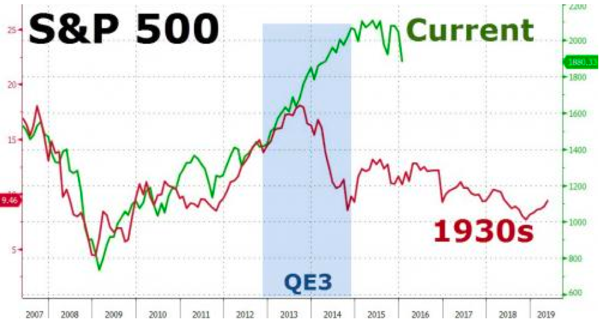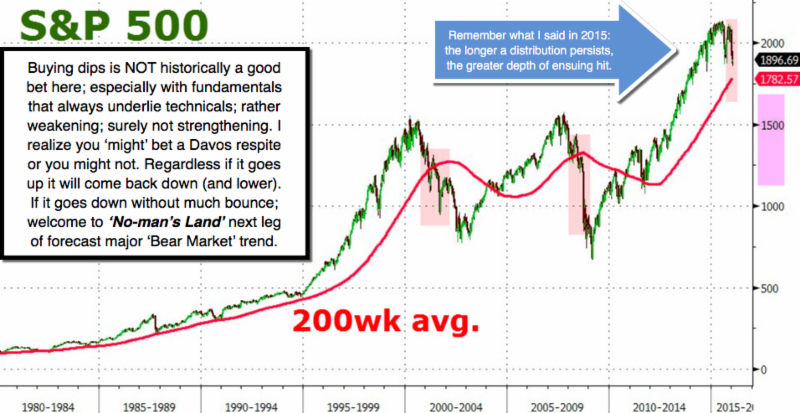Financial credit & counterparty risk – has consistently been an issue; but more recently it has come to the fore yet-again. We had called the Fed’s rate-hike several things: a) belated and reactive after they had already painted-themselves into a corner; b) based upon global macro issues in a way that required the Fed to pretend it was a response to economic recovery pace increases (which were already being reversed for a few months by then); hence we thought they ‘would’ hike rates following the already-stated tapering; but that; d) it would backfire on the Fed because the markets would roil; and as they had portrayed the hike as based on domestic considerations; they’d get a large part of the blame; deserved or not.

All of that occurred; validating our pre-hike view that they’d be dammed if they did, and dammed if they didn’t’ assessment; again because they waited maybe as much as two years too long to do it; and then moved in a reactive way. Also recall that credit markets reversed within two sessions of the move; also early indications of the move having essentially no impact (nil on mortgages as noted early on; never understood why media talked of higher rates for home buyers, as the Fed only impacted the Funds rate, and while we did look for erosion to real estate prices, we don’t see higher conventional home loan rates).
Historical evidence of what happens when the Fed is seen as misreading U.S. economic strength (to wit: even if global they presented the economic recovery as gaining traction while it was actually loosing some) is limited. However some exists as to what happens if it’s done at economic stall speeds, and of course the most infamous were 1936-’37 hikes, in the midst of the Great Depression.

I realize circumstances are never identical; though I made the comparison of a Fed here waiting too long, then hiking amid the Controlled Depression as I’ve called this entire financial-engineering experiment project (even Fed Bernanke, it’s architect, recognized the QE extents were pioneering); thus not without a degree of risk as he tried to ‘thread the needle’ to a broader-based recovery. Preceding that historic 1936-’37 move; the Fed’s balance sheet jumped from 5% to 20% of GDP, trying to offset the deflationary Depression environment.









Leave A Comment